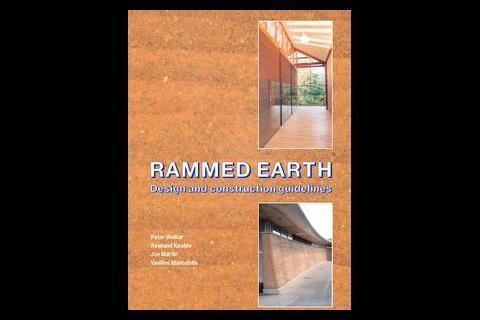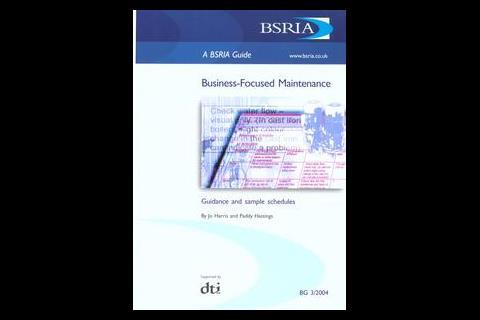Focusing on maintenance
One of the latest publications from BSRIA is Business-Focused Maintenance. This toolkit is designed to allow building operators to plan their maintenance schedules based on logical assessment, and provides a simple system to focus maintenance resources on plant items most critical to business continuity.
Sections in the guide include consequences of failures, maintenance methodology, levels of maintenance, analysis of risks, functional importance, assessing the likelihood of risks, monitoring process (including cost analysis) and practical condition monitoring.
The Business-Focused Maintenance toolkit consists of electronic risk assessment forms, generic maintenance schedules and a guide to explain the process. It is available from BSRIA for £220 + VAT (£180 + VAT to BSRIA members).
Coming back down to earth
Rammed earth wall buildings have been around since the 19th century, but until now there has been no authoritative guidance on their use in the UK. BRE is looking to change this with the publication of Rammed Earth: Design and Construction Guidelines.
The guidance has been derived from the results of extensive research at the University of Bath, funded by the DTI, and is intended to inform, develop and encourage the use of rammed earth wall construction for low- and medium-rise buildings.
The 156-page guide offers guidance on material selection, construction, structural design, architectural detailing, maintenance and repair, and draws on the experiences gained and techniques used in buildings in Europe, the USA, Africa and Australia.
Rammed Earth: Design and Construction Guidelines is available from BRE, (www.brebookshop.com) and costs £35.
Don’t hang back
When it comes to supporting ducts, pipes and cables in new buildings, engineers have an array of options open to them. As well as the more traditional solutions, many proprietary support systems have been developed over recent years to cater for all shapes, sizes and weights of building services. However, achieving the time and cost saving benefits that should come with the use of more innovative services distribution and suspension systems requires close and early coordination between the building services designers and the structural engineers.
Co-Construct – a network of research and information organisations BSRIA, CIRIA, the Concrete Society, TRADA and the Steel Construction Institute – has published Supporting Services from Structure, which aims to help designers achieve just this. The guide, the fourth in the Interface Engineering Publications series, was funded by the DTI and brings together relevant material from existing BSRIA and Steel Construction Institute guidance, as well as European and British standards.
It provides an introduction to the design issues faced by designers, both M&E and structural, and examines the implications of key design decisions on the integration of the building services into the structure. Common options for attaching services to the structure, such as fixings to beam flanges, steel decking and solid concrete slabs, are discussed.
The guide is neatly designed with colour-coded advice boxes, watch points and links that flag up whether the issues are relevant to services or structural engineers, or if they are common to both disciplines.
Supporting Services from Structure: Guidance for a Defect-Free Interface is available from the BSRIA bookshop. Call 01344 426511 or visit www.bsria.co.uk for a copy.
Source
Building Sustainable Design
























No comments yet